What to put in the cabinet above the kitchen sink, according to professional organizers
It’s an often forgotten spot, but it’s actually a prime piece of real estate in your kitchen – so make sure to use it wisely
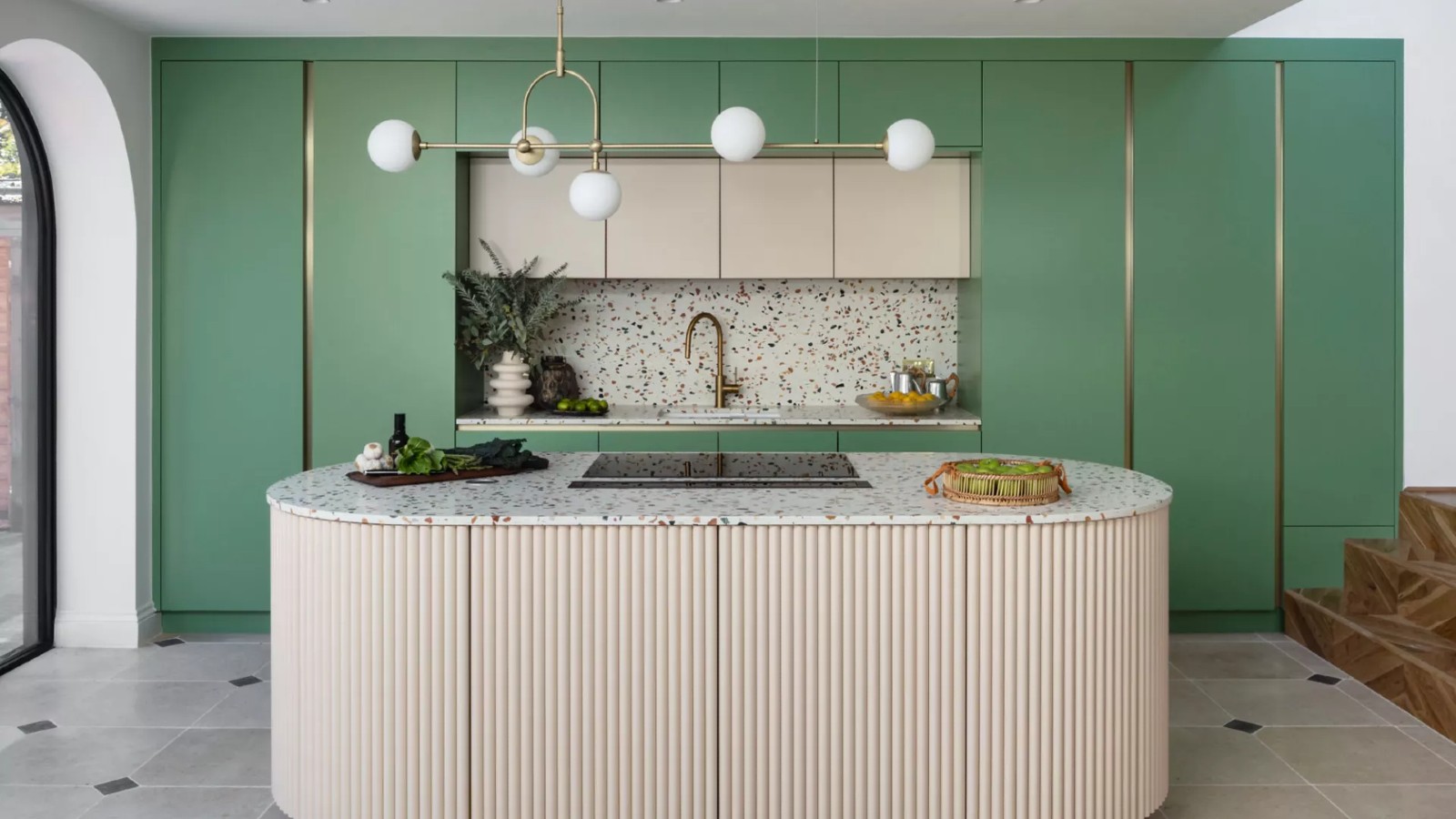
Planning what to put in the cabinet above the kitchen sink? You’d be forgiven for being conflicted over the best way to use this space when organizing the kitchen. Though it’s in a slightly more tricky spot, it’s also an important place for storage, given that it’s usually always within easy reach – after all, many of us spend a lot of time near our kitchen sinks.
'The cabinets above your kitchen sink are what I would consider "prime real estate",' certified professional organizer and owner of The Organizing Professionals, Janet Bernstein said. 'The kitchen sink is generally the central point in the kitchen, which makes the cabinets above very valuable.' This means that it's important to place items here that you use regularly, rather than items used every few months or so.
When it comes to the ideal items to store in this cabinet, there are a few sensible ways to make use of this valuable space – professional organizers share their thoughts on what to put in the cabinet above the sink, below.
What to put in the cabinet above the sink
Every home, and every kitchen, is different; so before organizing the cabinets above your sink, it’s important to think about how they need to function in your home.
Di Ter Avest, professional home and lifestyle organizer and the owner of Di is Organized said, 'The first thing to do before defining what to store in the cabinets above your kitchen sink is to consider your kitchen layout, the size of the cabinet, and the amount of storage available. It has to be planned based on your lifestyle and current needs.'
But if you're in need of some inspiration, these categories of items could work very well in this space:

Di Ter Avest is a professional home and lifestyle organizer and the owner of Di is Organized. Her in-person services, virtual projects, workshops, and digital book Organize Yourself Healthy, help women create sustainable organizational systems for their homes and lives. Her expertise has been featured on Forbes, Today and Apartment Therapy, and she has also given workshops at IKEA, West Elm, and Williams-Sonoma.
1. Everyday use items
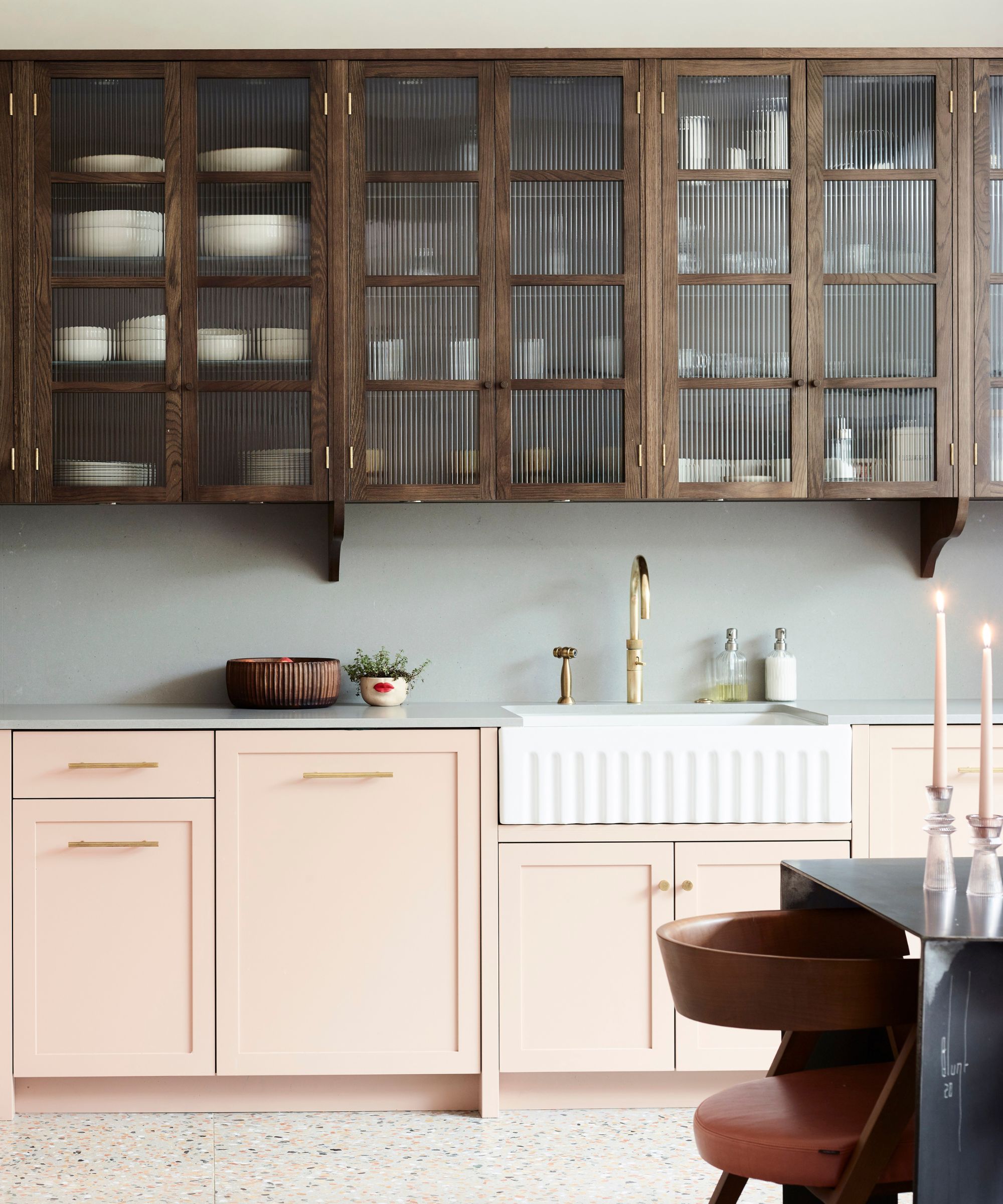
As mentioned, the cabinets above the sink are an important storage location, meaning it’s an ideal place to store items you use on a regular – even daily – basis.
'We usually suggest to our clients that the space above and around the sink are perfect for everyday items like drinking glasses, mugs, plates, bowls,' Di said. And easy access to these items isn’t the only benefit of placing them in these cabinets specifically. 'The dishwasher is usually near the sink, so think about the practical side of having storage space for the items nearby for quickly loading and unloading your dishes,' she continued.
In fact, Janet agreed specifically that, 'if you have a dishwasher that is directly to one side of your kitchen sink, then it makes sense to use this cabinet for dishes, due to its proximity.'

Janet Bernstein is a certified professional organizer and owner of The Organizing Professionals, Philadelphia’s largest team of award-winning home organizers. Janet is a Certified Professional Organizer, (CPO)® a Golden Circle member of the National Association of Productivity & Organizing Professionals (NAPO), a member of The National Association of Senior and Specialty Move Managers, and a member of the Institute for Challenging Disorganization.
The everyday items you use may, to some degree, vary for each household, so consider which items you reach for the most on a daily basis. For some, this will be your favorite coffee mugs, but for others, this may be things like baby bottles, or wine glasses.
2. On-the-go items
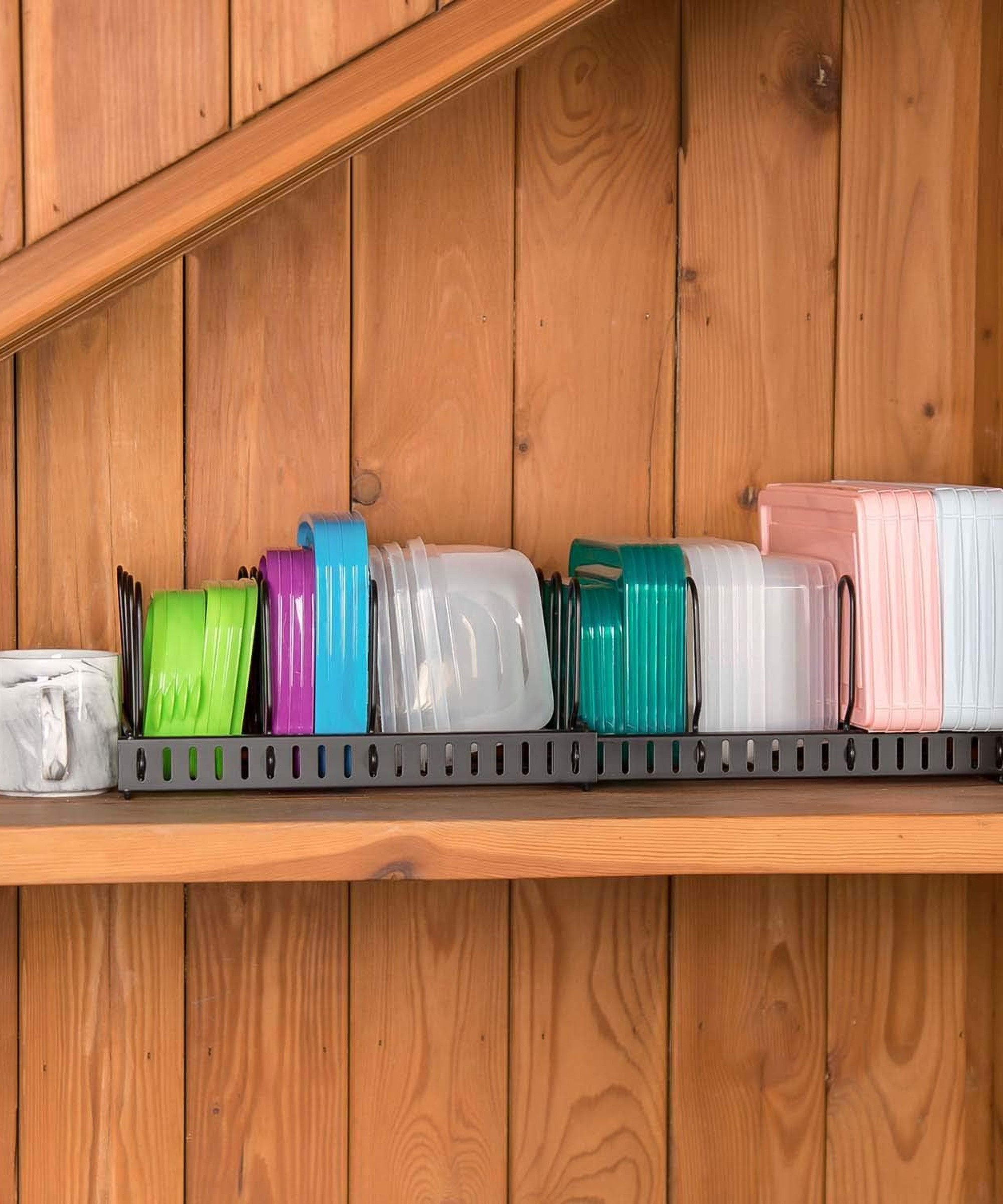
Comparably, items that you regularly need to grab before running out the door can be very helpfully placed in the cabinet above your sink. Di suggests that you may want to pop, 'food storage containers, travel mugs, or water bottles in this spot.'
Placing these in the cabinet above your sink will also mean that they can be easily topped up or cleaned too (which they often need to be on a daily basis) given their close proximity to the sink and the dishwasher.
Organizing food containers and travel bottles can be notoriously tricky, so if you are going to store these in such an important cabinet, make sure you don't have too many of the same thing, to avoid over-filling the space.
For example, consider whether you really need 15 different food storage containers if you only ever use one, or two, at a time. And, do you really need those insulated water bottles that you got for free from an event years ago, and have never used?
If you do lot of of these on-the-go items and need to keep them all, the best kitchen organizers can help to keep them in shape in your cabinet – we especially love these Amazon food container organizers.
3. Coffee and tea essentials
Professional organizer Ben Soreff, of House to Home Organizing, agreed that: 'The cabinets above the sink are a prime location for frequently used items – so if you do coffee or tea, then the mugs should live in those cabinets as well.'
Not only will it be helpful to have these items close to your water supply, but it’ll also ensure that you can wash up and put away your morning coffee or tea quickly too when you’re finished with it.
And that extends to any other products that you use regularly to make your favorite drinks. This will likely include your preferred type of coffee, a selection of your best-loved herbal teas, sugar, sweeteners, and maybe even any treats you like to enjoy with your hot beverages of the evening.
4. Cleaning products
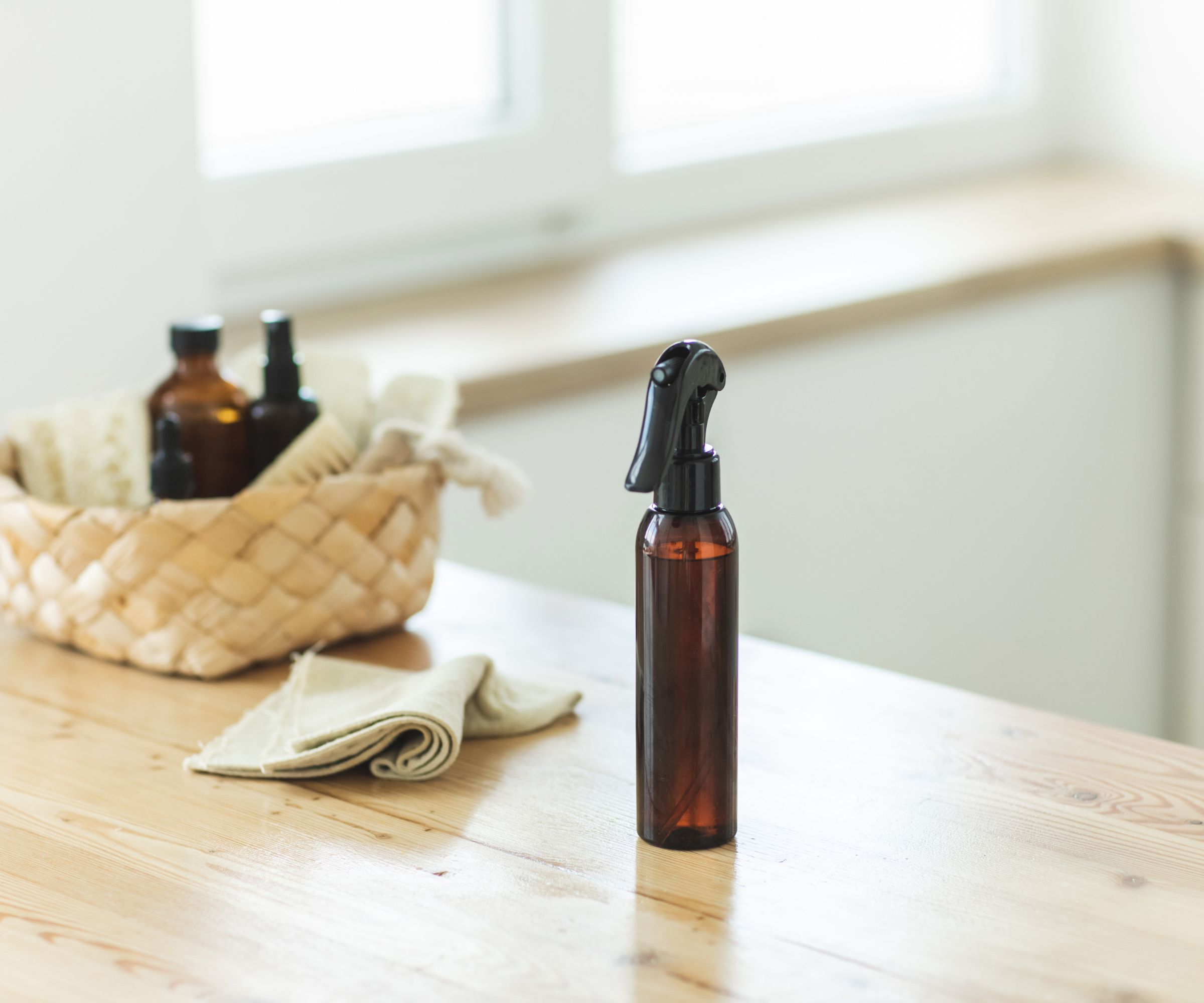
The cabinet above the sink is a logical place to stash cleaning supplies given how close the space is to many areas that need to be cleaned regularly, and with specialized products – such as your sink itself, the dishwasher, and perhaps even your oven and microwave.
There’s also the fact that it’s a handy, close-by spot to stash all of your dish cleaning essentials, such as dish soap, sponges, and rubber gloves, ensuring quick and easy access to these items as and when you need them.
In fact, one of the biggest kitchen sink organizing rules is not to have this kind of product languishing on the counter by your sink, so placing them in this cabinet makes even more sense.
Although many of us tend to store our cleaning products in the cabinet *below* the sink, experts say that surface sprays and disinfectants are among the items not to store under the sink. This is simply because they could pose a potential problem if you have little ones or pets at home, as this cupboard is easily accessible to them without proper child-proofing in place. The cabinet above the sink, on the other hand, is unlikely to be a spot that children can reach, putting them out of harm’s way.
5. Certain food items
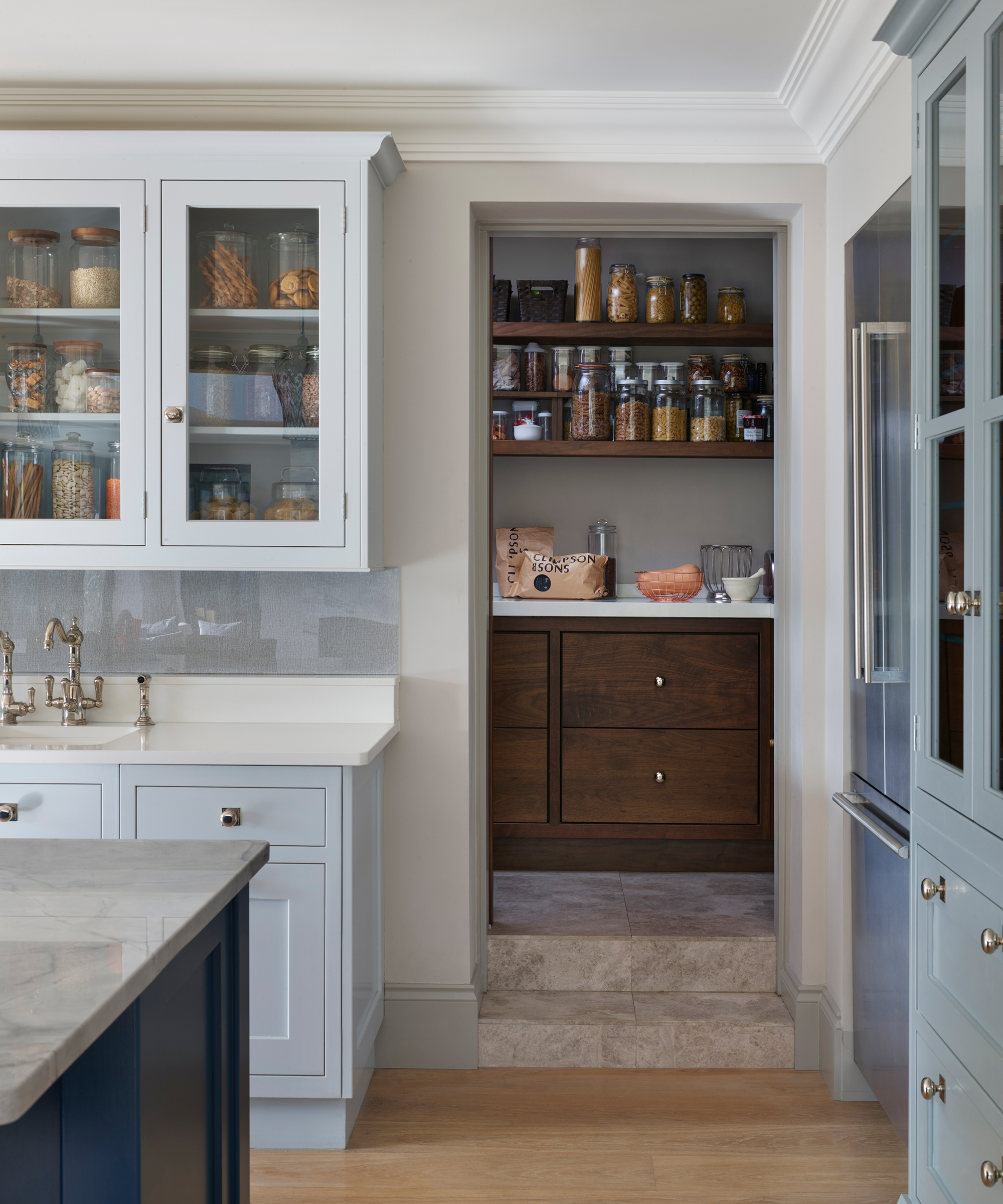
It may not be the first place you’d consider storing food items, but professional organizer Barbara Brock, former President of the National Association of Productivity & Organizing Professionals, suggests that the cabinet above your sink could be a good option for sealed food that you reach for on a regular basis.
'Are the glasses, plates, and bowls placed elsewhere in the kitchen? If yes, then food items could be stored in the cabinets above the sink – think cereals, canned goods, and boxed goods.' The majority of these kinds of items are not at risk of being damaged or wasted if they fall into the sink, or get wet.
However, it’s not a good idea to place all food or cooking items in this spot if you're planning other kitchen storage ideas, according to Barbara. 'I don’t advise cooking oils and spices to be kept in a cabinet directly above the sink – usually, these are kept in cabinets or drawers nearer the stove, because when you’re cooking, you want these ingredients handy.'
The same applies to baking ingredients; these shouldn’t be stored in such an important storage spot, Barbara said. 'Baking goods such as flour, sugar, baking powder, etc. should be kept in their own space – be it a shelf or drawer – elsewhere in the kitchen. This is because, typically, these are not used as often as other categories, unless you bake very often!'
6. Medicine
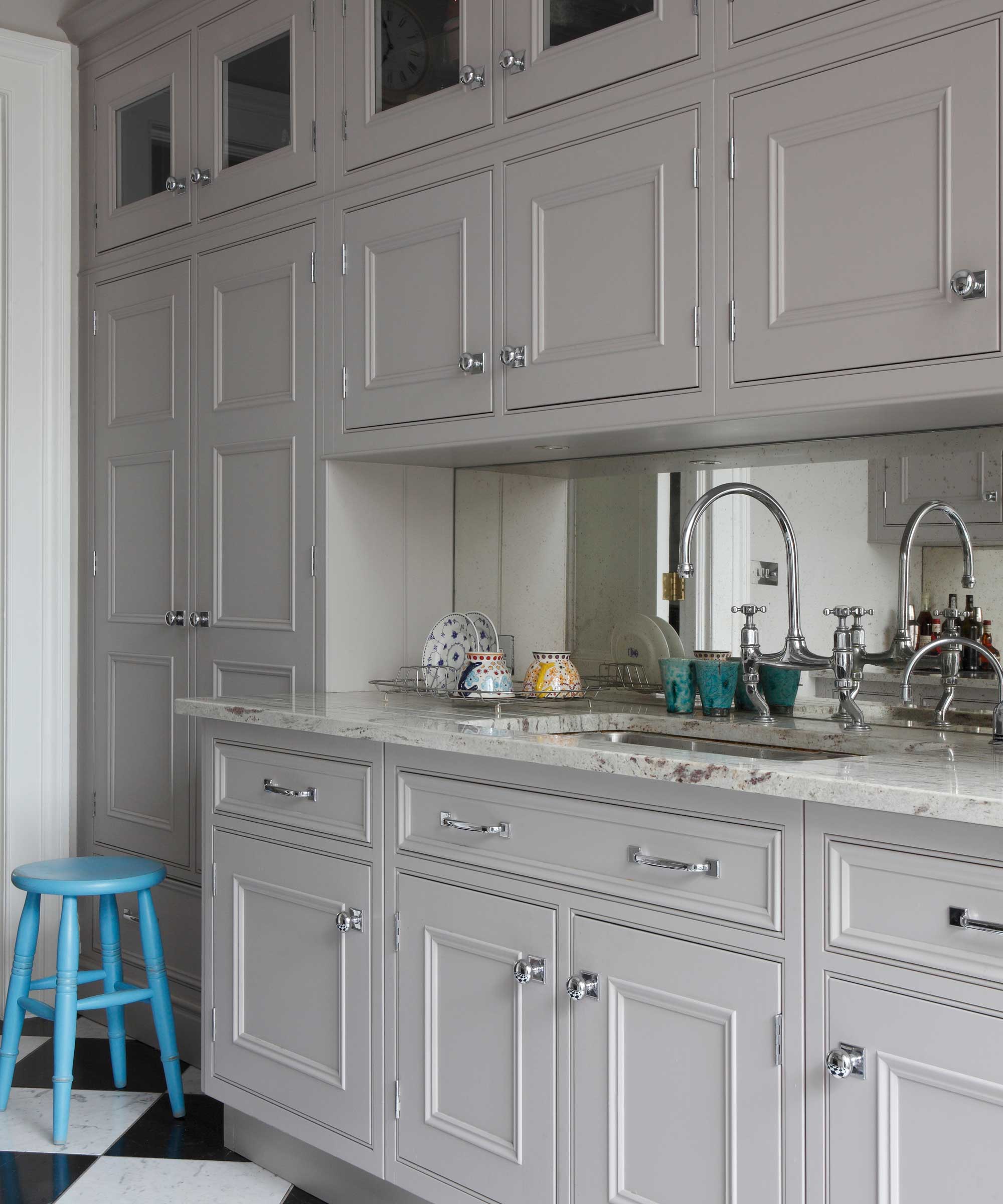
Higher cabinets like the ones above our sinks are easy access for most adults, but impossible for little ones to reach.
For this reason, as with cleaning products, it can be an excellent place to stash your medications and any other important medical items you may have. It’s unlikely that children will be able to get to these cabinets – as they'll likely be unable to climb into the sink as they might a kitchen countertop!
Storing medicines in the cabinet over your sink also means that you’re right where you need to in order to fill up a glass of water to take them, making it even more of a practical choice.
FAQs
How can I keep the cabinet above the sink organized?
Organizing the kitchen cabinets above the sink, or under the sink, is not dissimilar to organizing any other cabinet in this room. As with all other cabinets, you need this space to function efficiently, to ensure you can find what you need easily and quickly, and in a way that ensures items don’t drop out as you rummage.
As such, Di firstly suggests, 'Consider decluttering your cabinets if daily items don't fit nicely in this space; remove or rehome unnecessary items to fit your current needs.'
She then explains that if you are housing multiple different categories of kitchen items in this space, you should, 'group similar items together. For example, put glasses on one shelf; mugs on another. Store same-size plates on top of each other or use a rack to store them vertically.'
Should you put a cabinet above the sink?
If you don’t already have a cabinet above your sink, deciding whether or not to install one can be a tough decision. While some prefer to install a kitchen window here (if possible), or use open shelving instead, a cabinet can be useful to allow for hidden storage. This means that putting a cabinet above the sink is a good choice for households that use lots of different items – perhaps those living with a big family, or those with children.
And if you are considering installing a cabinet here, make sure you leave enough space between the bottom of the unit and the countertop. 'There are two thoughts in placing cabinetry above a sink,' Barbara said. 'A minimum of 18-20" from counter to the cabinet is the prescribed measurement. However, if you want to attach a paper towel holder to the underside of a cabinet, the suggested height is 24-24 1/2".'
With every cabinet, and particularly the one above your sink, using all the vertical space you have is also going to be a wise choice. 'Underutilizing the vertical space in cabinets is the most common mistake in our clients' homes,' Di said. 'So if you can, add a shelf or shelves, or use shelf risers, at Amazon, to stack more items.'
Sign up to the Homes & Gardens newsletter
Design expertise in your inbox – from inspiring decorating ideas and beautiful celebrity homes to practical gardening advice and shopping round-ups.
Amy Hunt is a freelance lifestyle writer and editor primarily covering homes and interiors, wellness, travel and careers. She was previously Lifestyle Editor at woman&home, commissioning and editing the homes, books and features sections of the website,
In 2019, she won the AOP Digital Journalist of the Year Award, for her work on womanandhome.com. Having worked in the industry for over eight years, she has contributed to a range of publications including Ideal Home, Livingetc, T3,Goodto, Woman, Woman’s Own, and Red magazine.
-
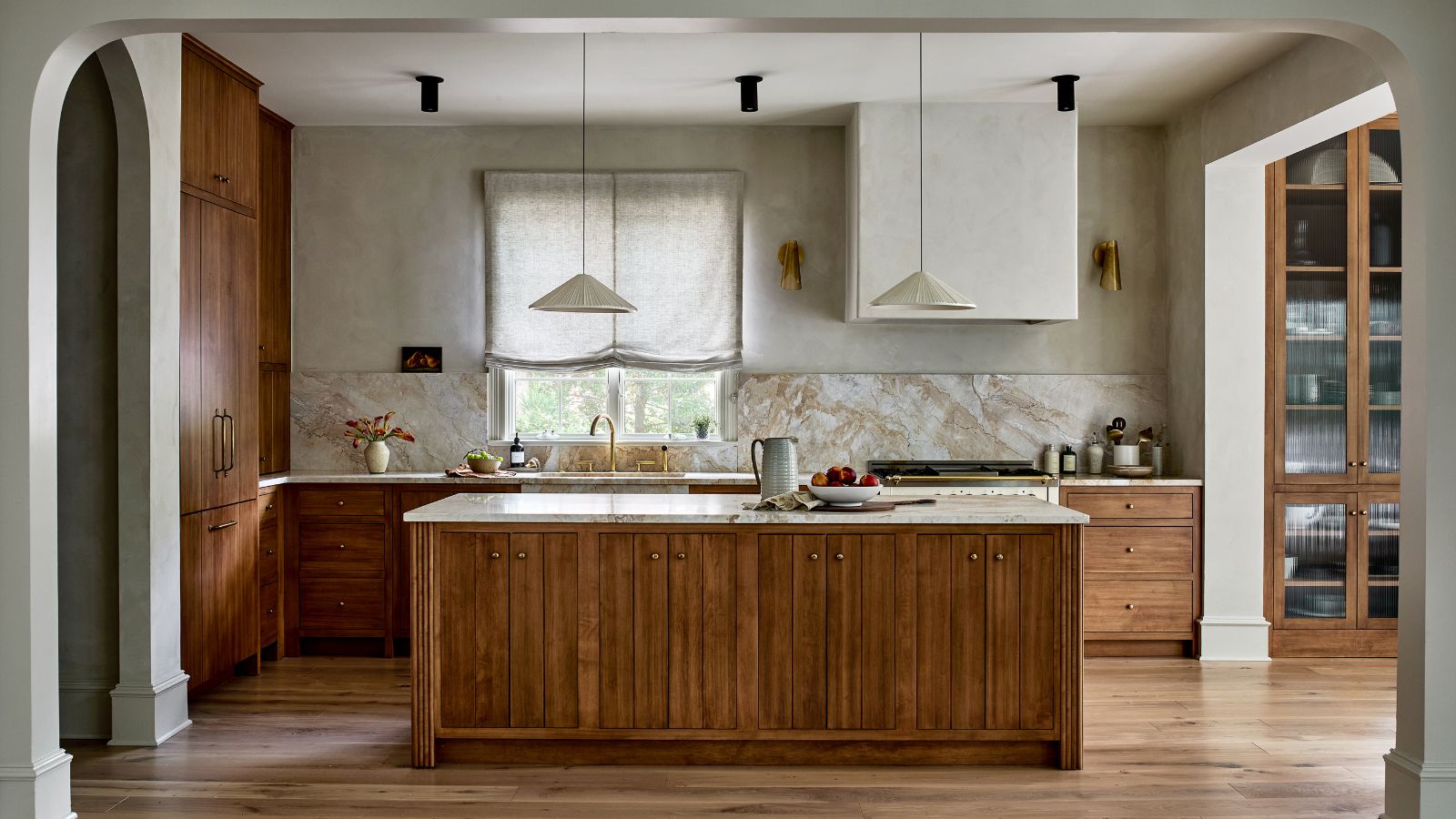 This kitchen has been transformed from cramped and outdated to warm and welcoming – and it's all thanks to a few thoughtful Japandi-style features
This kitchen has been transformed from cramped and outdated to warm and welcoming – and it's all thanks to a few thoughtful Japandi-style featuresWarm wood tones, textural designs, and considered contrast are key to this beautiful transformation
By Molly Malsom
-
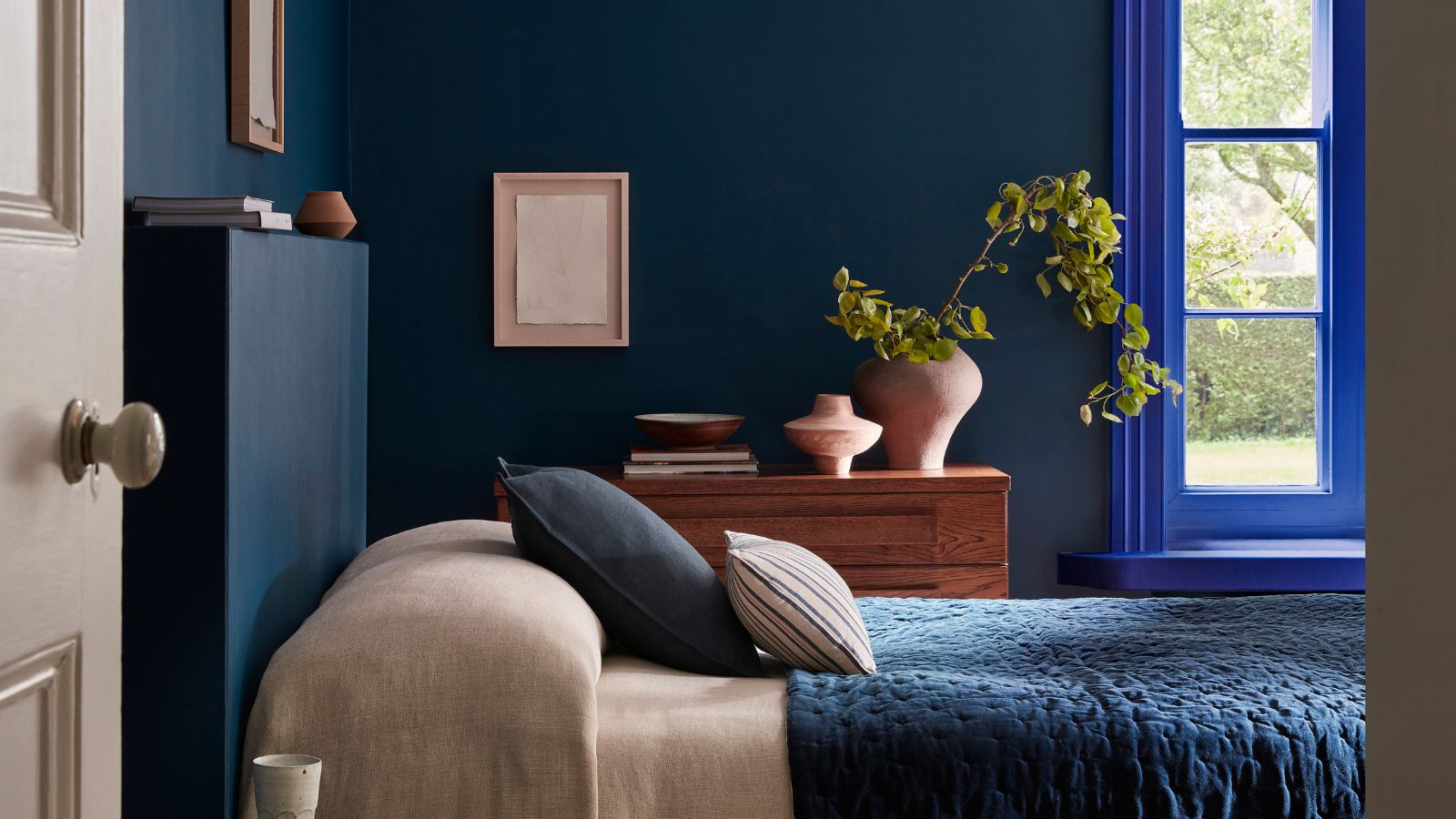 This brilliant $4 drawer organizer helped me reclaim control of my chaotic underwear drawer – and turbocharged my mornings
This brilliant $4 drawer organizer helped me reclaim control of my chaotic underwear drawer – and turbocharged my morningsIt makes heaps of difference when I'm getting ready
By Chiana Dickson